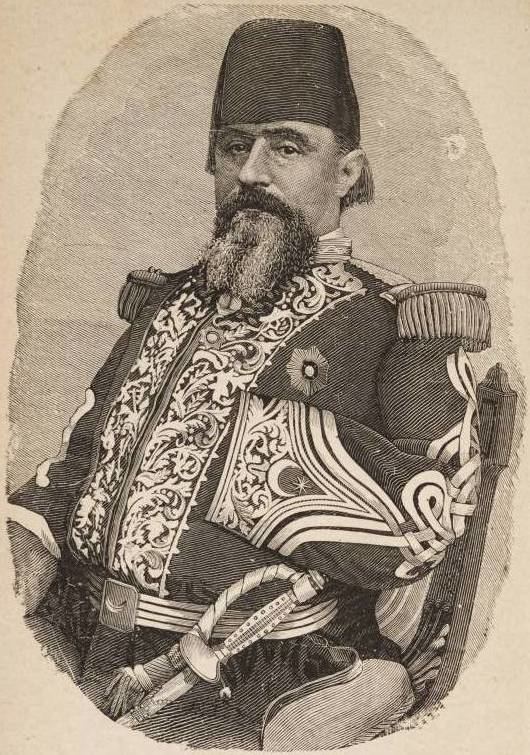Local time Sunday 4:45 AM | ||
 | ||
Weather 16°C, Wind E at 6 km/h, 57% Humidity | ||
Gura or Gura’e is a settlement in Eritrea's Debub region in northeast Africa. It is located in the eponymous Gura Valley in the southeastern Eritrean highlands. It is about 9 kilometers (5.6 mi) SE of Dekemhare and about 32 kilometres (20 mi) SSE of the capital Asmara.
Contents
Map of Gura, Eritrea
Early
Gura developed as a market at the present site from the 17th century AD. It stood across a caravan route linking northern Ethiopia with the port of Massawa on the Red Sea via the Alighede and Mareb rivers.
19th century
During the 19th century Ethio-Egyptian War, Gura (and nearby Khaya Khor) was the site of two major Egyptian forts and, subsequently, a major Ethiopian victory over their inhabitants in 1876. The Egyptian commander Ratib Pasha intended to remain within the safety of the Gura fortress, but his American chief of staff Loring Pasha—the former Confederate Brig. Gen. William Loring—shamed him into direct confrontation with the main Ethiopian force by crying "No! March out of them! You are afraid!" (Discharged and returned to America, Loring would subsequently point his finger at the Egyptians for the loss in A Confederate Soldier in Egypt, simultaneously complaining of commander Osman Pasha's refusal to leave the second fort and explaining Ratib Pasha's having left the safety of his own because "what little judgment [he] possessed was entirely crushed by abject fear".) The subsequent rout from March 7 to 9 ended Egyptian hegemony over Eritrea and the Red Sea littoral and left open the possibility that the French would be able to colonize the entire region and endanger British routes through the Suez Canal.
Following Britain's complete occupation of Egypt and the rising of the Mahdi in the Sudan, the Egyptian fort at Gura was among those detailed in the 1884 tripartite Hewett Treaty. The treaty, signed at Adwa and ratified by Queen Victoria, obliged Ethiopia to oversee the evacuation of exposed Egyptian garrisons in Eritrea and the southern Sudan through the port of Massawa in exchange for the garrisons' supplies of arms and ammunition, recognition of their sovereignty over the Bogos lands—essentially, the highlands of modern Eritrea, which the Ethiopians organized as Hamasien,—and other concessions. During this period, Gura served as Ras Alula's capital of the Ethiopian province of Hamasien prior to his removal to Asmara. Once Ethiopia had made good on its part of the bargain, however, Britain's concern over France's rapid expansion of its colony in the Bay of Tadjoura (today's Djibouti) led it to openly support Italy's bloodless occupation of Massawa and establishment of Italian Eritrea in the former Egyptian lands. Gura was occupied by the Italian-allied Bahta Hagos in 1889. The Battle of Adwa ending the First Italo-Ethiopian War kept it from annexing the entirety of Ethiopia but it continued to hold Gura and other towns in the former Egyptian highlands.
20th century
Under the Italian protectorate, Gura was left undeveloped until Benito Mussolini began to build up the Italian military presence in preparation for the second Italian invasion of Ethiopia. Much of the former town was removed to establish a military base, which served as the main airfield for the northern front of the war. As such, the base was heavily involved in the Italian use of airborne chemical weapons such as mustard gas during the conflict.
Once captured by Allied forces during World War II's East African Campaign, it hosted a Royal Air Force (RAF) support base and an Australian field hospital. As an adjunct to the Lend-Lease Act, a secret expansion of the base—Project 19—was established by 2,000 (nominally neutral) American employees of Johnson, Drake, and Piper, along with an equal number of hired or conscripted Italians and Eritreans. The facility—operated by employees of Douglas Aircraft—received damaged RAF aircraft which were sailed down the Red Sea to Massawa and transported overland, and repaired them for return to the North African front under their own power. The American facility boasted a nine-hole golf course with the following rules:
At war's end, Eritrea was incorporated into Haile Selassie's restored Ethiopia. British administrators had already dismantled Gura's air base, leaving only the tarmac. Lacking an airport and now off the main lines of transport and communication, the community has been overshadowed by nearby Dekemhare. As a Cold War ally of the United States, however, Imperial Ethiopia was able to host American reconnaissance aircraft at the site during the onset of violent Eritrean separatism. The operation ceased with the overthrow of the empire by the Communist Derg in the 1970s, switching Ethiopia's side in the Cold War.
While the Eritrean People's Liberation Front (EPLF) proved increasing successful and began to control most of the present country, the Derg continued to hold areas of the highlands and, after their defeat in the Second Battle of Massawa in 1990, continued to use napalm and cluster bombs against the city. The end of the conflict and recognition from Addis Ababa was secured by the EPLF's victory in a major tank battle in the valley around Gura on May 20, 1991.
